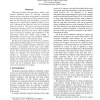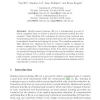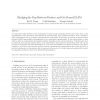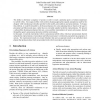161 search results - page 28 / 33 » Using EM to Learn 3D Models of Indoor Environments with Mobi... |
ICRA
1998
IEEE
13 years 11 months ago
1998
IEEE
1 sensors is to construct a structural description from sensor data and to match this description to a previously acquired model [Crowley 85]. An alternative is to project individu...
ECAL
2001
Springer
13 years 12 months ago
2001
Springer
Reinforcement learning (RL) is a fundamental process by which organisms learn to achieve a goal from interactions with the environment. Using Artificial Life techniques we derive ...
ICRA
2010
IEEE
13 years 5 months ago
2010
IEEE
— In this paper, we consider the problem of how background knowledge about usual object arrangements can be utilized by a mobile robot to more efficiently find an object in an ...
RAS
2010
13 years 5 months ago
2010
One important design decision for the development of autonomously navigating mobile robots is the choice of the representation of the environment. This includes the question which...
AAMAS
2005
Springer
14 years 28 days ago
2005
Springer
The ability to determine a sequence of actions in order to reach a particular goal is of utmost importance to mobile robots. One major problem with symbolic planning approaches re...




